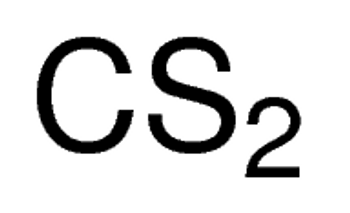Description
Carbon disulfide
ACS reagent, ≥99.9%
-
CAS Number 75-15-0
-
Empirical Formula (Hill Notation) CS2
-
Molecular Weight 76.14
-
Beilstein/REAXYS Number 1098293
-
EC Number 200-843-6
-
MDL number MFCD00011321
-
PubChem Substance ID 329751607

-
NACRES NA.21
Properties
| Related Categories | ACS Grade Solvents, ACS and Reagent Grade Solvents, Solvent Bottles, Solvent Packaging Options, Solvent by Application, Solvents, Sure/Seal Bottles Less... |
| grade | ACS reagent |
| vapor pressure | 5.83 psi |
| vapor density | 2.67 (vs air) |
| assay | ≥99.9% |
| autoignition temp. | 212 °F |
| expl. lim. | 50 % |
| impurities | H2S, passes test (lim. ~1.5 ppm) |
| SO2, passes test (lim ~2.5 ppm) | |
| ≤0.05% water | |
| evapn. residue | ≤0.002% |
| color | APHA: ≤10 |
| refractive index | n20/D 1.627 (lit.) |
| bp | 46 °C (lit.) |
| mp | −112-−111 °C (lit.) |
| density | 1.266 g/mL at 25 °C (lit.) |
| SMILES string | S=C=S |
| InChI | 1S/CS2/c2-1-3 |
| InChI key | QGJOPFRUJISHPQ-UHFFFAOYSA-N |
General description
Carbon disulfide (CS2) is a colorless liquid. It is present in atmosphere and natural waters in the form of sulfur gas. It is responsible for the production of sulfur dioxide (SO2) in the atmosphere (stratosphere and/or troposphere).[1] Its lifetime in the atmosphere has been proposed to be around 12 days.[2] It is a non-polar solvent.[3]
Carbon disulfide is a highly volatile, flammable liquid with low ignition temperature. It can be synthesized by reacting hydrocarbon gas with sulfur. It is an important raw material for preparing viscose rayon and cellophane film.[7]
Application
Carbon disulfide has been used for the desorption of air samples during analysis of trihalomethanes (THMs) in those samples.[5]
It may be used in the preparation of dibenzyl trithiocarbonate, a RAFT (Reversible Addition-Fragmentation Transfer) chain-transfer agent (CTA).[4] It may be employed as a solvent in the preparation of benzyl chlorodithioformate.[6]
Carbon disulfide may be used in the xanthogenation of cellulose[8] and in the synthesis of poly(ethylene trithiocarbonate)[9] and dithiocarbamates.[10] C2S may undergo hydrolysis catalyzed by nanosized titania and zirconia to form CO2 and H2S.[11] It can also generate 1,3-dithiolium carbenes via cycloaddition with acetylenes.[12]
Packaging
1, 2 L in Sure/Seal™
500 mL in Sure/Seal™
Safety Information








